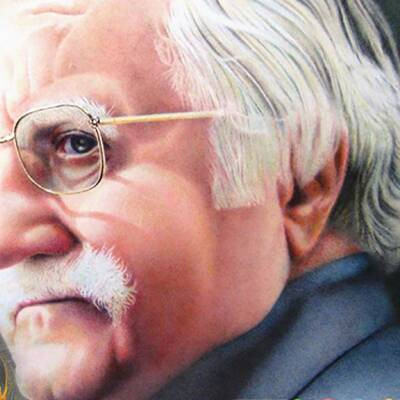
Persian Miniature, Blend of Art and Professionalism
Miniature or Persian miniature is an art that brings the ability of depicting the whole nature in a small frame and basically refers to any delicate artistic phenomenon, regardless the way it has been created. The word miniature in Persian literally means a small and delicate nature, though the word itself has entered the Persian language in the middle of the recent century and almost since the Qajar period, it is an art which has for long existed and is of an ancient history in Iran.
The historical development of Persian miniature is attributed to the distant past before the advent of Islam. Indeed, Persian miniature, which has once been inspired by Chinese painting methods assimilated with unique perspective of Iranian art, has made a path for emergence of divine effects in Iranian painting before the advent of Islam; and, afterwards, has finally merged with theosophy and Islamic thoughts.
The tiles, some of which still exists, suggest that years before Mongol invasion of Iran, the same painting and drawing styles and methods, which were then adopted as styles of book paintings, were used in Iran. On the contrary, there is another popular belief which suggests the origin of this art is Iran, it is believed by many researchers that this art has originated in Iran, and afterwards has spread to China; and, in the Mongol period it has returned to Iran in a rather developed form.
Hence, in the first centuries after emergence of Islam, Iranian artists made an extraordinary effort to complete and develop this art, establishing special painting schools such as schools of Shiraz, Harat, Tabriz, Qazvin, and Isfahan, and combining it with Arabic script or handwriting. Gilding edges and frontispiece of Qur'an, arabesques and Khitan patterns are all the precious works of miniature which originated as a combination of miniature and Arabic handwriting, in the third century AH, i.e. when Iranians succeeded to enter the Abbasid court. Unfortunately, a considerable portion of these works was destroyed during the Mongol invasions in the seventh and eighth centuries. Moreover, during Ilkhanid period when the country has returned to a relatively calm situation, other prominent works of art emerged including Shahnama of Ferdowsi and Demotte Shahnama.
After this period, due to the constant intellect and freedom of act with which craftsmen were provided after Bagdad school, Iranian miniature works in Herat school developed to some extent and finally the art of Persian painting and miniature, after Herat period, was transferred to the Safavid era. In this period, after selection of Tabriz as the capital, Kamaleddin Behzad was invited to Tabriz and was appointed as the head of the royal library and, in collaboration with great craftsmen, endeavored to develop and evolve it. Therefore, in an overall classification, style and school of painting in Safavid era can be considered two distinguished sections:
- Tabriz School whose style remained as before until Qazvin became the capital. Regarding this school, it can be noted that miniatures in this era were all of a similar type, and in terms of elegance, pen strokes, color and design, it followed the Herat school, and differs only slightly.
- Isfahan School which was established when Isfahan became the capital city, and during this period style and methods of work changed dramatically and as obvious and typical examples we can refer to decorative motifs of mosques in Isfahan, as well as Chehelsotoon and Ali Qāpu palaces.
